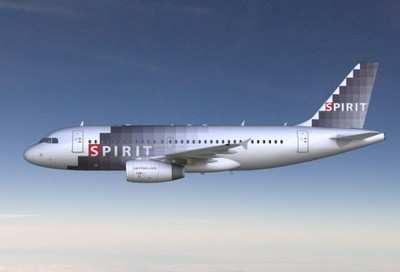Tue, May 26, 2009
But Overall Industry Jobs Are Down
Figures released today by the U.S. Department of Labor Bureau of
Transportation Statistic (BTS) show that U.S. scheduled passenger
airlines employed 2.3 percent more pilots and 5.9 percent more
maintenance workers in 2008 than in 2007 while total industry jobs
declined by 3.0 percent.

Most of the job losses were reported in the "Other"
category.
BTS, a part of the Research and Innovative Technology
Administration, reported that the seven large network carriers
employed 1.1 percent more pilots and 8.6 percent more maintenance
workers in 2008 than in 2007. The seven largest low-cost carriers
employed 1.1 percent fewer pilots and 12.5 percent fewer
maintenance workers from 2007 to 2008.
All of the low-cost carriers except Frontier Airlines added
pilots from 2007 to 2008. Spirit Airlines had the largest increase
in pilot employment followed by Allegiant Airlines. Allegiant had
the largest increase in maintenance workers of any low-cost airline
from 2007 to 2008 while Spirit had the largest reduction.

The passenger airlines had 8.9 maintenance workers per aircraft
in 2008, up from 8.3 per aircraft in 2007. The network airlines had
12.9 maintenance workers per aircraft in 2008, up from 12.3 per
aircraft in 2007. Spending by network airlines for outsourced
maintenance increased from 42.5 percent of total maintenance
spending in 2007 to 42.8 percent in 2008.
Scheduled passenger airlines include network, low-cost, regional
and other airlines. Network carriers operate a significant portion
of their flights using at least one hub where connections are made
for flights on a spoke system. Low-cost carriers are those that the
industry recognizes as operating under a low-cost business model,
with lower infrastructure and aircraft operating costs.
Data is compiled from annual reports filed with BTS by
commercial air carriers, as of May 20. There were 37 reporting
scheduled passenger carriers in 2008. Hawaiian Airlines failed to
file its report.
More News
From 2021: The Inside Skinny On What Being An ANN Oshkosh Stringer Is All About By ANN Senior Stringer Extraordinare, Gene Yarbrough The annual gathering at Oshkosh is a right of p>[...]
Video Showed That During The Takeoff, The Nose Baggage Door Was Open On May 10, 2025, about 0935 eastern daylight time, a Piper PA-32RT-300, N30689, was destroyed when it was invol>[...]
Get The Latest in Aviation News NOW on Instagram Are you on Instagram yet? It's been around for a few years, quietly picking up traction mostly thanks to everybody's new obsession >[...]
"I think what is key, we have offered a bonus to air traffic controllers who are eligible to retire. We are going to pay them a 20% bonus on their salary to stay longer. Don't reti>[...]
Aero Linx: Pilot Briefing The gathering, translation, interpretation, and summarization of weather and aeronautical information into a form usable by the pilot or flight supervisor>[...]
 Oshkosh Memories: An Aero-News Stringer Perspective
Oshkosh Memories: An Aero-News Stringer Perspective NTSB Prelim: Piper PA32RT
NTSB Prelim: Piper PA32RT ANN FAQ: Follow Us On Instagram!
ANN FAQ: Follow Us On Instagram! Aero-News: Quote of the Day (05.28.25)
Aero-News: Quote of the Day (05.28.25) ANN's Daily Aero-Term (05.28.25): Pilot Briefing
ANN's Daily Aero-Term (05.28.25): Pilot Briefing




